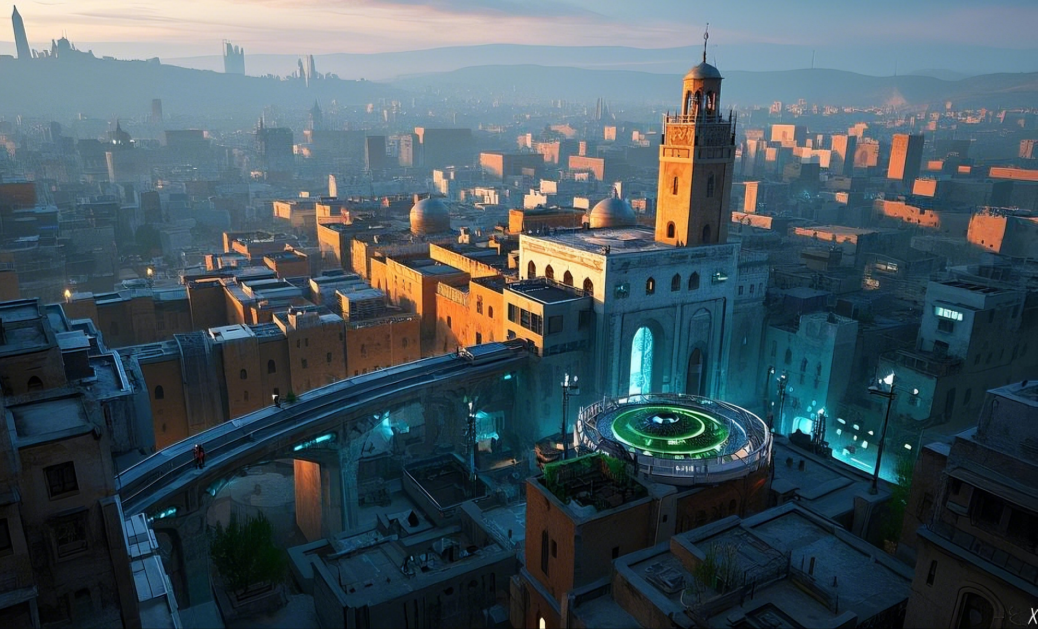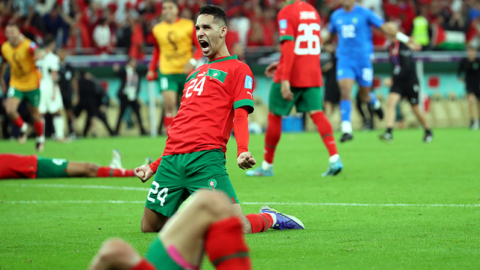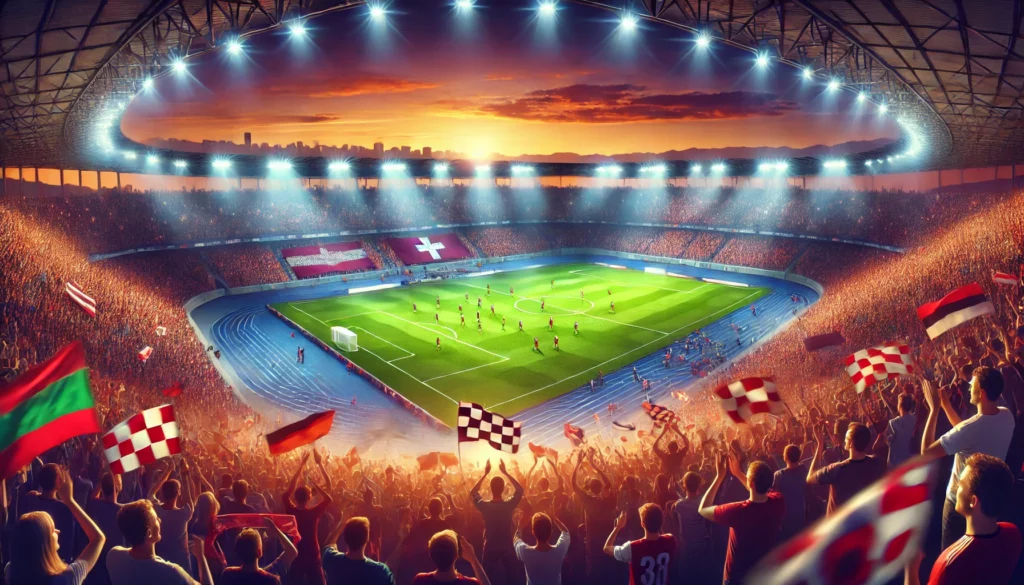In recent years, Morocco has witnessed extensive reconstruction efforts across the country. Whether it is in modern urban renewal projects or the careful rehabilitation of ancient structures, reconstruction has become central to Morocco’s path to recovery and growth. But what is driving these changes? Let’s explore the key reasons:
1. Recovery from Natural Disasters
A devastating earthquake in 2023 left thousands homeless and caused the loss of numerous historic buildings. This tragic event has necessitated rapid rebuilding to rehouse affected communities and restore public infrastructure. Government aid programs and international support have been mobilized to speed up the recovery process.
2. Preservation of Cultural Heritage
Fez, home to the ancient medina (Fes el-Bali), is a UNESCO World Heritage Site renowned for its centuries-old architecture and traditional craftsmanship. Over time, neglect, urban overcrowding, and disasters have taken a toll on these historic treasures. Reconstruction in Fez is not just about rebuilding—it’s about restoring the soul of the city by using traditional materials and techniques to preserve its unique character.
3. Urban Renewal and Modernization
Morocco’s broader strategy is to modernize its infrastructure to boost economic growth. Upgrading roads, railways, public amenities, and even historic neighborhoods helps improve the quality of life for citizens and attracts tourists and investors. In historic cities like Fez, modern amenities are being integrated with traditional urban fabrics, ensuring that progress does not erase history.
4. Balancing Tradition with Efficiency
There is an ongoing debate among architects and local residents about the best methods for reconstruction. Some favor fast, modern concrete solutions, while others advocate for methods that honor traditional building practices with local earth, stone, and wood. In Fez, many fear that ignoring traditional techniques could result in a loss of cultural identity.
5. Government and International Support
Significant funding and technical expertise are provided by the Moroccan government and international organizations such as the World Bank and UNESCO. This collaborative effort ensures that reconstruction projects not only rebuild communities but also safeguard Morocco’s rich heritage for future generations.
In tandem with its reconstruction and heritage preservation efforts, Morocco is also investing heavily in world-class sports infrastructure in preparation for the 2030 FIFA World Cup, which the country is set to co-host with Spain and Portugal. This ambitious project is part of a broader strategy to modernize the nation and create lasting economic and social benefits.
Key Points:
- New Stadiums and Upgraded Facilities:
Massive investments are underway to build and renovate stadiums, including the proposed Grand Stade Hassan II near Casablanca—a state-of-the-art facility with a capacity of 115,000 seats. This landmark project is designed to not only host World Cup matches but also to serve as a catalyst for urban renewal and job creation. - Infrastructure Improvements:
Alongside new sports venues, Morocco is upgrading transportation networks—such as high-speed rail extensions, expressways, and improved public transit systems—to ensure smooth access for international visitors and boost overall economic activity. These developments are interwoven with broader urban renewal projects that help modernize cities while preserving their unique cultural identities. - Economic and Social Impact:
The investments for the World Cup are generating thousands of jobs and attracting international interest, which in turn drives additional funding into both modern construction and heritage restoration. By blending modern infrastructure with careful preservation of historical sites, Morocco is setting a model for sustainable development where progress respects cultural roots.
Call to Action:
Join us as we witness Morocco’s transformation—where the past meets the future. Share your thoughts on how best to rebuild while preserving cultural identity!
Why Reconstruction Is Transforming Morocco – and Fez in Particular
في السنوات الأخيرة، شهد المغرب جهود إعادة إعمار واسعة النطاق في جميع أنحاء البلاد. سواء كانت مشاريع تجديد حضرية حديثة أو تأهيل دقيق للمباني العريقة، أصبح إعادة الإعمار محور طريق المغرب نحو التعافي والنمو. لكن ما هي الدوافع وراء هذه التغييرات؟ دعونا نستعرض الأسباب الرئيسية:
1. التعافي من الكوارث الطبيعية
ترك زلزال مدمر في عام 2023 آلاف الأشخاص بلا مأوى وتسبب في فقدان العديد من المباني التاريخية. وقد فرضت هذه المأساة الحاجة إلى إعادة بناء سريعة لتأمين مساكن للمجتمعات المتضررة واستعادة البنية التحتية العامة. وقد تم تعبئة برامج المساعدات الحكومية والدعم الدولي لتسريع عملية التعافي.
2. الحفاظ على التراث الثقافي
تُعد فاس، التي تحتضن المدينة القديمة (فاس البالي)، موقعًا تراثيًا عالميًا لليونسكو يشتهر بعماراته التي يعود تاريخها إلى قرون طويلة وحرفه التقليدية. على مر الزمن، أدت الإهمال والازدحام الحضري والكوارث إلى تآكل هذه الكنوز التاريخية. إن إعادة الإعمار في فاس ليست مجرد بناء من جديد، بل هي إعادة إحياء روح المدينة باستخدام المواد والتقنيات التقليدية للحفاظ على طابعها الفريد.
3. التجديد الحضري والتحديث
تسعى استراتيجية المغرب الأوسع إلى تحديث بنيته التحتية لتعزيز النمو الاقتصادي. إن ترقية الطرق والسكك الحديدية والمرافق العامة وحتى الأحياء التاريخية تُحسن جودة حياة المواطنين وتجذب السياح والمستثمرين. وفي المدن العريقة مثل فاس، يتم دمج الخدمات الحديثة مع نسيج المدينة التقليدي لضمان أن التقدم لا يمحو التاريخ.
4. التوازن بين التقاليد والكفاءة
يجري نقاش مستمر بين المهندسين المعماريين والسكان المحليين حول أفضل طرق لإعادة الإعمار. يفضل البعض الحلول الحديثة القائمة على الخرسانة السريعة التنفيذ، بينما يدعو آخرون إلى اعتماد طرق تحترم أساليب البناء التقليدية باستخدام الطين والحجارة والخشب المحلي. في فاس، يخشى كثيرون أن يؤدي تجاهل هذه الطرق التقليدية إلى فقدان الهوية الثقافية.
5. الدعم الحكومي والدولي
توفر الحكومة المغربية والمنظمات الدولية مثل البنك الدولي واليونسكو تمويلًا كبيرًا وخبرة فنية للمشاريع. تضمن هذه الجهود التعاونية أن تُعيد مشاريع إعادة الإعمار بناء المجتمعات مع الحفاظ على التراث الغني للمغرب للأجيال القادمة.
استثمارات كأس العالم: دافع التحول الحديث في المغرب
بالتوازي مع جهود إعادة الإعمار والحفاظ على التراث، يستثمر المغرب بشكل كبير في بنية تحتية رياضية عالمية المستوى تحضيرًا لكأس العالم 2030، التي سيستضيفها بالتشارك مع إسبانيا والبرتغال. يُعد هذا المشروع الطموح جزءًا من استراتيجية أوسع لتحديث البلاد وتحقيق فوائد اقتصادية واجتماعية مستدامة.
أهم النقاط:
- ملاعب جديدة ومرافق مطورة:
تجري الاستثمارات الضخمة حاليًا لبناء وتجديد الملاعب، بما في ذلك مشروع “الملعب الكبير حسن الثاني” المقترح قرب الدار البيضاء، والذي سيستوعب 115,000 متفرج. لا يهدف هذا المشروع إلى استضافة مباريات كأس العالم فحسب، بل يُعد أيضًا حافزًا للتجديد الحضري وتوفير فرص عمل كثيرة. - تحسينات في البنية التحتية:
إلى جانب إنشاء المرافق الرياضية، يقوم المغرب بترقية شبكات النقل، مثل تمديد خطوط السكك الحديدية فائقة السرعة، وإنشاء طرق سريعة، وتحسين نظم المواصلات العامة، لضمان سهولة الوصول للزوار الدوليين وتعزيز النشاط الاقتصادي العام. وتندمج هذه التطويرات مع مشاريع تجديد حضري أوسع تساهم في تحديث المدن مع الحفاظ على هويتها الثقافية الفريدة. - التأثير الاقتصادي والاجتماعي:
تُسهم الاستثمارات المخصصة لكأس العالم في توفير الآلاف من فرص العمل وجذب الاهتمام الدولي، مما يزيد من تدفق الأموال إلى مشاريع البناء الحديثة والترميم التراثي. ومن خلال دمج البنية التحتية العصرية مع الحفاظ الدقيق على المواقع التاريخية، يُقدِّم المغرب نموذجًا للتنمية المستدامة حيث يحترم التقدم الجذور الثقافية.
الدعوة للمشاركة:
شاركونا آرائكم حول كيف يمكن للأحداث الرياضية الكبرى مثل كأس العالم أن تكون قوة إيجابية للتغيير في المغرب، وانضموا إلى النقاش في منتدياتنا!



